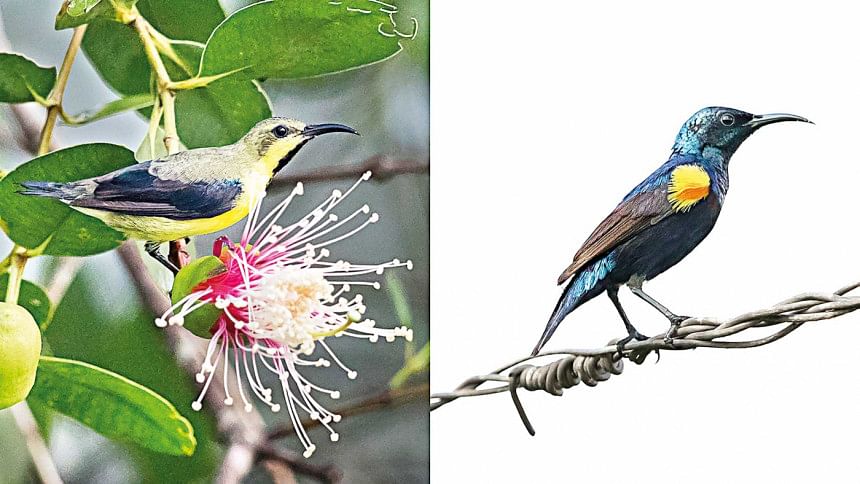Good-looking Birds

We all have our notion of "good-looking" when it comes to people. This idea extends to other creatures. In case of birds there are three levels of looking good. First, some bird species are simply prettier than others. Second, several birds of the same species can have varying attractiveness. Finally, an individual bird's looks can change from month to month.
Still, when we see a bird we focus on identifying the species and perhaps observing its behaviour. When I put on my photographer's hat, however, I must think of the final result: the bird's photograph. So I pay attention to the bird's looks. A photogenic bird increases the likelihood of a better photograph.
From species to species, colour is the most appealing feature of birds. There are countless variations of avian colours and associated patterns.
Some of the world's spectacularly colourful birds are in Central and South America. Birds such as Resplendant Quetzal, Cock O'the Rock and Sunbittern are justifiably famous for their exquisite plumage. They draw a large number of admiring bird photographers.
With their glittering bodies, hummingbirds of the Americas are also attractive. Photographers go through great lengths – setting up multiple flashes around feeders, for example – in order to photograph the plumage of these birds in flattering light.
In Australia, colourful parrots and finches are exciting. Papua New Guinea has birds of paradise. These attractive birds that are not seen outside Australasia.
In Bangladesh colourful species occur in forests and include minivets, sunbirds, leafbirds, flycatchers, green magpies, parrots and trogons. All but one of our kingfishers are startlingly colourful. We are also blessed with many woodpeckers including flamebacks, easily spotted in the city.
Besides colour, appendages make birds attractive: the large, colourful beaks of toucans, the casques over the beaks of hornbills; the improbable crown of the Cock o'the Rock, the elaborate tail feathers of birds of paradise, and the long streamers of Tropicbirds for example.
In some species males are more colourful than females. These include most ducks, sunbirds and some forest birds. Males and females of yet other species are equally attractive, but in different colours. For example, Scarlet Minivet males are brilliant red while females are bright yellow.
Birds of prey have their own attraction stemming from the power and stealth they radiate. Their eyes, beaks, talons as well as powerful wing-beats add to this charisma of power. Some raptors also have beautiful patterns, for example the white dots seen on a red Greater Spotted Eagle.
An individual bird can go from attractive to unattractive within a year. Some males look their most appealing during breeding season. For example, Red Munia becomes bright red early in its breeding season, gradually turning grey-brown as the season progresses. The Purple Sunbird sports a bright yellow-orange circle on its shoulder during breeding season. But after breeding it takes on a drab "eclipse" plumage. Some birds moult feathers when they can look distinctly disheveled.
My fondness for avian colour notwithstanding, I suspect that a majority of the world's bird species are shades of brown, beige or grey, collectively known as "LBJ" or little brown jobs. Are they not worth photographing then? Of course they are! But the photographer must work harder for a more attractive photograph. For example, photographs of any bird in action can be dramatic. Catching the interaction of two or more birds can also yield an interesting picture.
For the author's bird photos, updated daily, please follow "ihtishamkabir" on Instagram.

 For all latest news, follow The Daily Star's Google News channel.
For all latest news, follow The Daily Star's Google News channel. 



Comments